US Dollar Exchange Rates of
25th May 2015
China Yuan 6.2033
Report from China
House prices continue down
The April data on residential building prices in 70 major
cities across China has been released by the National
Bureau of Statistics of China. When compared to March,
prices for newly constructed residential buildings in April
declined in 48 cities, increased in 18 and were unchanged
in 4 cities. Year on year April house prices fell in 69 of the
70 cities surveyed.
Prices of second-hand homes fell in 34 cities but increased
in 28 cities. The highest month-on-month increase was 2.4
percent.
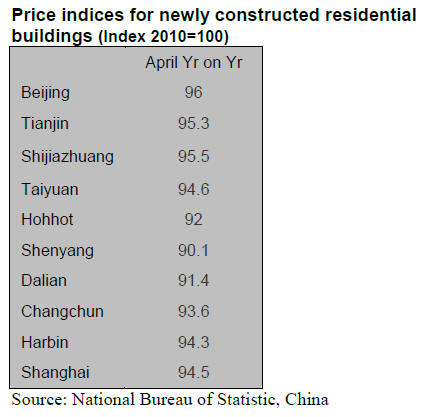
US$7 billion overseas investments
It has been reported that domestic investors invested some
US$103 billion in 156 countries in 2014, up 14% year on
year. In 2014 China's outbound investment surpassed
inflows of foreign investment such that there was a net
capital outflow. This marks a fundamental change in
China's economic development pattern since the reform
and opening-up period.
According to the available statistics China has around 200
forestry investment and cooperation projects in Asia,
Europe, Africa, America and Oceania worth an estimated
US$7 billion and employing almost 10,000.
China‟s overseas forestry investment is benefitting from
new opportunities through free trade zone strategies,
bilateral investment protection agreements and deals on
double taxation.
Since the creation of an International Trade and
Investment Promotion office within the China Forest
Industry Federation the rights and obligations of China‟s
oversea forestry enterprises secure wider support.
However, it is recognized that Chinese enterprises
investing in overseas forestry face many challenges such
as an imperfect supportive government policy and
insufficient financial and management support.
Other challenges include a lack of experience on the part
of investors, a low level of business management capacity,
an inability to correctly assess and react to risks and a lack
of international business acumen.
Trade between China and Africa
According to a report from the Global Environmental
Institute (GEI) a Chinese not for-profit, non-governmental
organization that was established in Beijing in 2004 timber
imports from Africa during the period 2005 to 2013
averaged around 2-3 million cubic metres per year.
Sawnwood imports over the same period increased
rapidly. Imports of other wooden products such as
plywood began to grow over the past two years.
For details see:
http://www.geichina.org/index.php?controller=Default&ac
tion=index
China‟s log imports from 2011 to 2013 were mainly from
the Republic of Congo (22%), Cameroon (13%),
Mozambique (13%), Equatorial Guinea (12%), Benin
(7%), Gambia (5%), the Democratic Republic of Congo
(5%), Ghana (5%) and Liberia (3%).
Sawnwood imports were from Gabon (37%), Mozambique
(24%), Cameroon (20%), Benin (5%), the Republic of
Congo (4%), Ghana (2%), the Democratic Republic of
Congo (2%), Tanzania (1%), Cote d'Ivoire (1%) and
Zambia (1%).
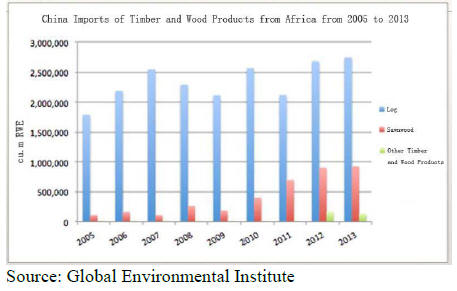
The trends in imports from Cameroon and Mozambique
are illustrated below.
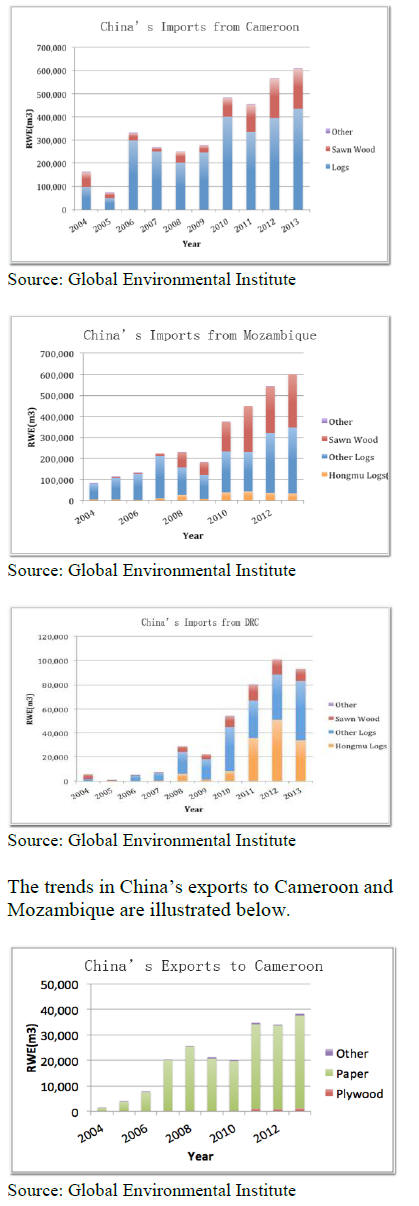 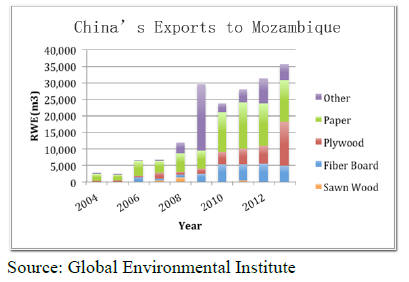
The timber trade between China and Africa has been
increasing and becoming more sophisticated as the trade in
sawnwood, plywood and added value products has grown.
The trend is from trading raw materials and primary
products to trading added-value wood products.
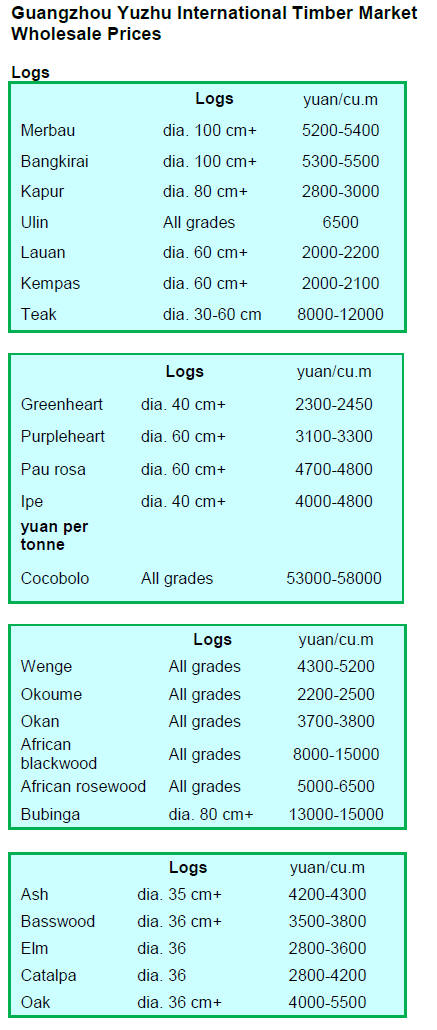
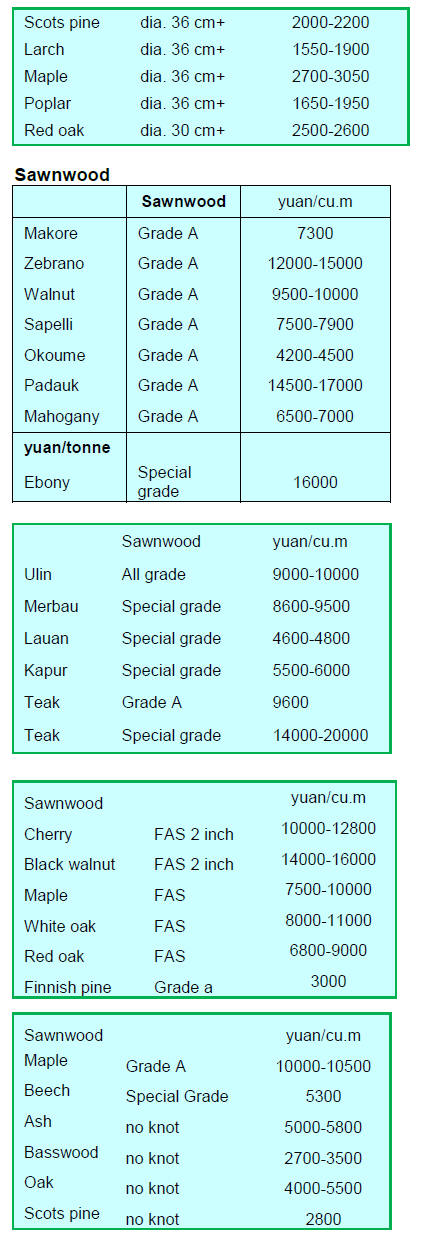 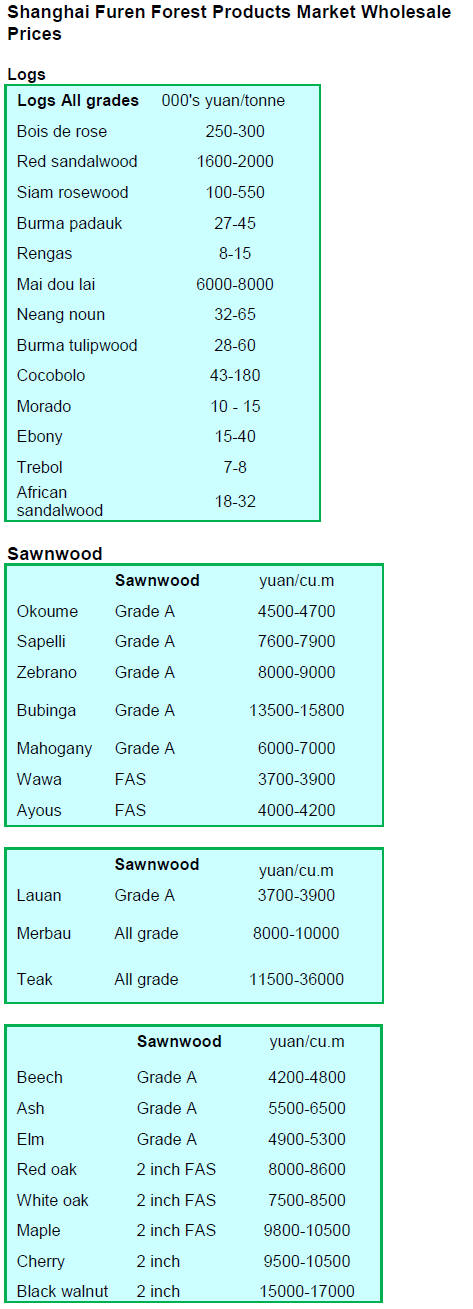 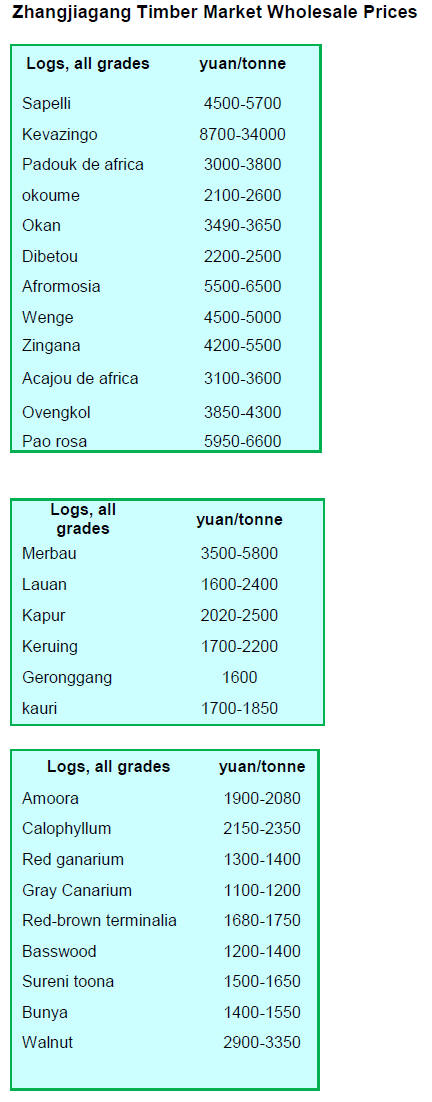
|